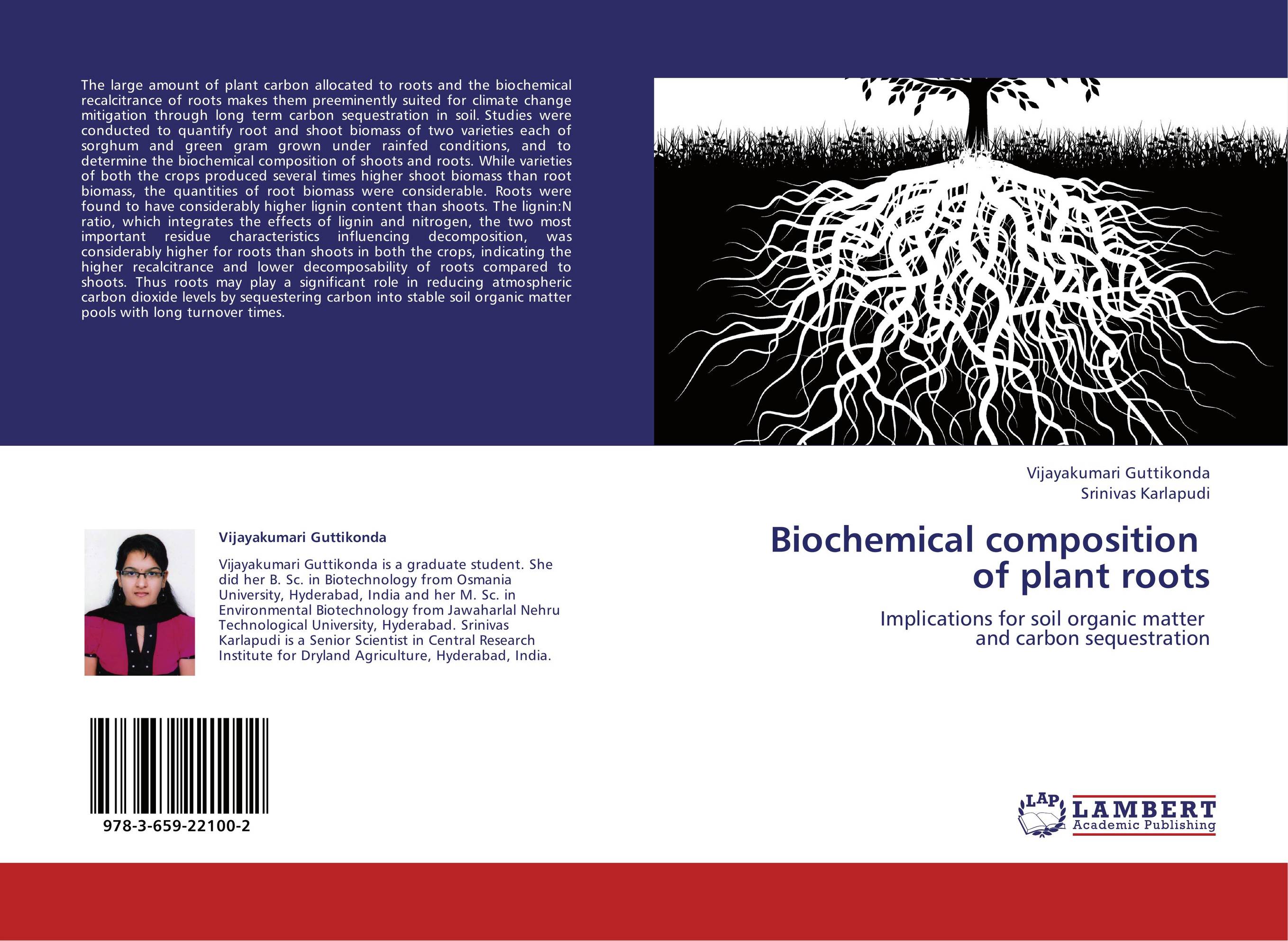| Поиск по каталогу |
|
(строгое соответствие)
|
- Профессиональная
- Научно-популярная
- Художественная
- Публицистика
- Детская
- Искусство
- Хобби, семья, дом
- Спорт
- Путеводители
- Блокноты, тетради, открытки
Biochemical composition of plant roots. Implications for soil organic matter and carbon sequestration

В наличии
| Местонахождение: Алматы | Состояние экземпляра: новый |

Бумажная
версия
версия
Автор: Vijayakumari Guttikonda and Srinivas Karlapudi
ISBN: 9783659221002
Год издания: 2012
Формат книги: 60×90/16 (145×215 мм)
Количество страниц: 80
Издательство: LAP LAMBERT Academic Publishing
Цена: 30500 тг
Положить в корзину
Позиции в рубрикаторе
Отрасли экономики:Код товара: 492257
| Способы доставки в город Алматы * комплектация (срок до отгрузки) не более 2 рабочих дней |
| Самовывоз из города Алматы (пункты самовывоза партнёра CDEK) |
| Курьерская доставка CDEK из города Москва |
| Доставка Почтой России из города Москва |
Аннотация: The large amount of plant carbon allocated to roots and the biochemical recalcitrance of roots makes them preeminently suited for climate change mitigation through long term carbon sequestration in soil. Studies were conducted to quantify root and shoot biomass of two varieties each of sorghum and green gram grown under rainfed conditions, and to determine the biochemical composition of shoots and roots. While varieties of both the crops produced several times higher shoot biomass than root biomass, the quantities of root biomass were considerable. Roots were found to have considerably higher lignin content than shoots. The lignin:N ratio, which integrates the effects of lignin and nitrogen, the two most important residue characteristics influencing decomposition, was considerably higher for roots than shoots in both the crops, indicating the higher recalcitrance and lower decomposability of roots compared to shoots. Thus roots may play a significant role in reducing atmospheric carbon dioxide levels by sequestering carbon into stable soil organic matter pools with long turnover times.
Ключевые слова: Lignin, carbon sequestration, biochemical composition, Plant roots, Soil Organic Matter



